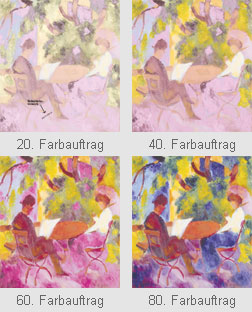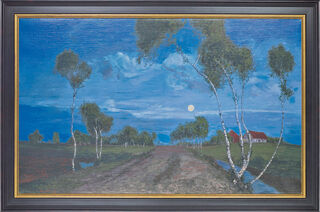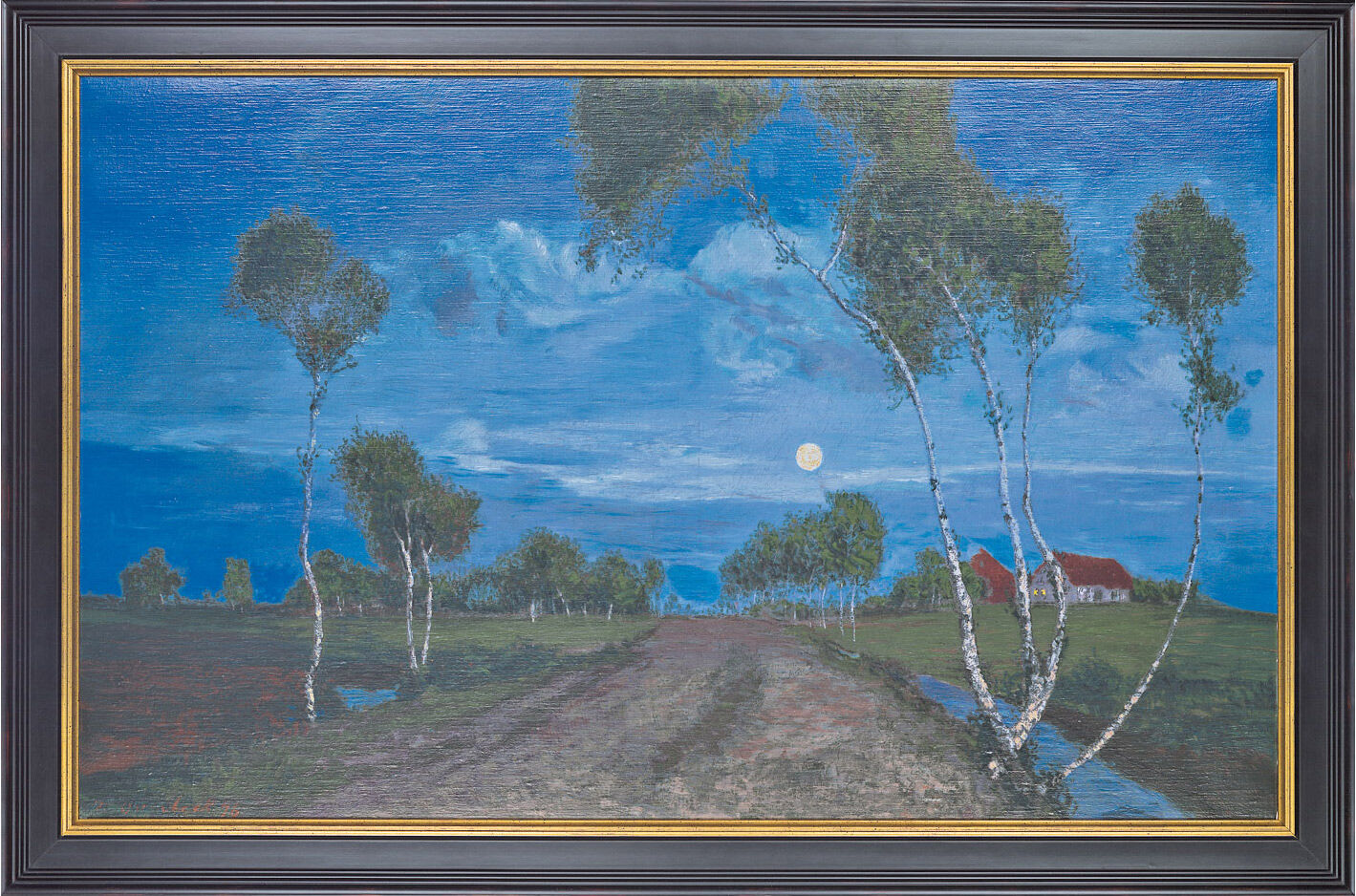Picture "Evening in the Moor", framed


Picture "Evening in the Moor", framed
Quick info
limited, 950 copies | original Dietz replica | oil on canvas | on stretcher frame | framed | size approx. 64 x 96 cm (h/w)
Detailed description
Picture "Evening in the Moor", framed
Fritz Overbeck (1869-1909) was a German painter and etcher and member of the Worpswede artists' colony. His favourite motifs were large, deserted moors and heath landscapes.
"Evening in the Moor": The moon symbolyses constant renewal. Gently its light shines on the path to the horizon. Birches, which are the trees of life, surround the edge and arch over the path that the viewer has to take...
Original: Oil on canvas, Altes Packhaus, Vegesack.
Original Dietz replica. Oil on canvas in 86 colours. Limited edition of 950 copies. Each canvas replica is stretched on a stretcher frame like the original, so you can re-stretch the canvas as room temperature and humidity fluctuate. Framed with dark real wood strip. Size incl. frame approx. 64 x 96 cm (h/w).
Günter Dietz developed a revolutionary method for the authentic reproduction of paintings, where not the usual printing inks are used, but the same original colours used by the artist. Depending on the artist's painting technique, up to 140 (!), different paint applications need to be applied in order to achieve a perfect replica of the original that also tangibly reproduces the "relief" and pastosity of colour composition.
Here are the examples of 'Couple at the Garden Table' by August Macke:

Furthermore, the same material as the original, such as reproduction on canvas, paper, wood, copper, parchment is always used.
The result is a perfect, gridless reproduction that comes very close to the original in expressiveness and effect. Even museum specialists often can not distinguish the replica from the original. Therefore, a special security note must be added, which is visible only under X-rays.
The edition of most Dietz replicas is limited, usually to 950 copies. Each canvas replica is stretched onto a frame as the original, so you can retighten the canvas in case of fluctuations in room temperature and humidity. A high-quality solid wood strips round off every Dietz replica.
Numerous masterpiece paintings of Rembrandt, Caspar David Friedrich, Claude Monet, Gustav Klimt and various others have been recreated by the "Dietz Offizin". Famous modern artists such as Pablo Picasso, Salvador Dalí, Max Ernst, Friedensreich Hundertwasser, Joan Miró and Marc Chagall have used this method developed by Günter Dietz in order to have replicas of their works produced.
Press comments:
"The Dietz System provides images as good as the originals. What the electronics did with the invention of Hi-Fi and stereo for music playback - here the graphic technology made up for visual art." (Die Zeit, German newspaper)
"In theory, there is no difference between the original and the Dietz replica. They should not be called reproductions, but facsimiles." (Newsweek, US-American news magazine)
"For art printers all over the world remains unrealizable to this day, what Dietz only managed with the help of printing technology: The perfect reproduction of painted works." (Der Spiegel, German news magazine)
A true-to-the-original reproduction of an artwork in the same size and with the best possible material and colour uniformity.
The mould is usually taken directly from the original so that the replication reproduces even the finest details. After casting the replication, using the most appropriate method, the surface is polished, patinated, gilded or painted according to the original.
A replication of ars mundi is a recognizable copy of the original.


